I mentioned in yesterday’s letter that I was making Gulab Jamun for Diwali, and that I’d give you all my recipe. Cooking isn’t normally something I write about, despite the fact that I was a professional chef for 9 years. Also the most popular essay I’ve ever written (a quarter of a million views) was a recipe for garlic bread I wrote almost seven years ago (I’ll repost that here next month).
For those new to it, Gulab Jamun is basically a fried milk-powder doughnut soaked in a rosewater syrup. It sounds completely weird, probably, and there’s nothing that can really describe the resulting texture and flavor. The closest dessert in mouth feel to it is Basbousa, a honey and pistachio semolina cake, but the difference between these two is rather profound.
Also, though this all might sound daunting because of the multiple steps, it only takes about an hour to prepare and a total of three hours including waiting time. Also, if you’ve ever made a pie crust or biscuits from scratch, the hardest part of this will be really easy.
There are two major steps of this. The first is making the doughnuts, and the second is making the syrup. The doughnuts are almost completely dry and almost tasteless on their own. They’re basically sponges for the syrup that they’ll be soaked in for several hours.
The Syrup
Let’s start first with the syrup, which is almost like a simple syrup but with a little more water. You’ll need:
200 grams Sugar (white or raw, not brown nor powdered)
250 ml Water
Rose Water (you can usually buy this in specialty grocery stores and even some pharmacies)
Cardamom pods (not ground cardamom).
Saffron (optional, but I highly suggest it)
I tend to think in ratios rather than measurements, so just remember it’s 4 parts sugar to 5 parts water. You need to make enough syrup to soak the balls, but most recipes usually have you making way more syrup than you need.
You’ll simmer the sugar and the water together in a pot just as you would do for a simple syrup. It’s best never to let this boil because you’ll lose too much water. But you can usually fix this by adding a little more water up to a point.
Once the sugar is dissolved, add several cardamom pods and saffron threads if you’re using it. You can crush the pods if you like, but you don’t need to.
Keep it on the lowest temperature possible for at least 10 minutes to infuse the cardamom, then turn it off. Once it’s started to cool, add a tablespoon of rosewater. Most recipes suggest “a few drops” but ignore them unless you really don’t like rose.
It’s important not to add the rosewater until the syrup has cooled a bit, by the way. If it’s hot, much of the rose flavor will dissipate.
This is what mine looks like. Notice the weird sheen on the top. If yours doesn’t have this it’s not the end of the world, but if it looks too thin you need to simmer it longer. If it is too thick (more like honey or maple syrup) you need to slowly add water to get it thinner.
The Doughnuts
This is the more complicated part, but not really all that hard. You’re going to be making a very dry crumbly dough like for pie crusts (it’s actually a little drier than that). Then you’ll fry them.
Here is what you need.
Oil for frying (even better if you have a deep fryer)
60 grams of Butter (unsalted)
100 grams “instant” or “powdered” (dry) milk
40 grams White Flour
30 ml (about 2 tablespoons) Buttermilk or Greek Yogurt
60 ml (4 tablespoons) Milk
1 tablespoon Powdered Sugar, or grind down regular sugar to make it fine
1 teaspoon Baking Powder
First of all, melt the butter. If you have or know how to make ghee, you can use that instead, but otherwise pour the melted butter into a bowl and put it back in the fridge to cool down for about 15 minutes while you do everything else.
Before we get to the mixing, I need to make sure you know you’ll be trying to use as few stirs as possible. It’s like with pancakes or pie crusts, etc: the more you mix the dough once moisture has hit it, the more the gluten gets released and the harder the dough balls will be. You want them as light as possible, but you also need to make sure everything is mixed.
So, now, in a large bowl, add the powdered milk, the sugar, the baking powder, and the flour together and stir to mix this. You don’t need to worry about over-mixing yet.
Then, drizzle the cooled melted butter over the mixture. If you do this slowly, some of the milk solids will not pour out, which makes it closer to ghee and that’s good. But don’t worry about making this perfect.
Now, mix this in to a point where it looks crumbly or sandy. Again, you don’t need to worry too much about over mixing yet. It should look like this:
Next, drizzle the buttermilk (or yogurt) and milk over the top slowly, and then mix again. Here is where you need to be very careful not to over-mix, so use really wide strokes with a wooden spoon or very gently toss it with your hands. It will look like this:
If it is wetter than this, that’s fine, just make sure everything is mixed well. It will also be a little messier when you form the balls, but that’s not the end of the world.
Now, heat your oil. If you’ve got a fryer, turn it to 275 fahrenheit or 135 celsius. If you don’t have a fryer, heat the oil on medium and you’ll need to test the temperature with a thermometer or a test piece of the dough. It shouldn’t brown immediately, but it should start to float after about a minute.
Now, oil (don’t flour!) your hands and form the balls. They can be as wide as a tealight, but you don’t want to go much larger than this. The proportions I’ve given you makes 8 walnut-sized balls, which is the easiest size for frying. Smaller is also possible but try that size first.
If the dough is dry like mine, you will need to press them together as you form them. If it doesn’t stick, go ahead and add a tiny bit more milk. Then, roll them a bit to make sure they are smooth but they don’t have to be perfect.
Now, drop them in the oil. After about three minutes, they should be floating and start browning on one side. Turn them with a metal spoon or tongs so they will then brown on the other side
They should look like this when they are done:
Final Steps
While the balls are cooling down and the oil drains off (you can put them on a paper towel if you like to help with this), heat up the syrup again. You don’t want it too hot (remember, the rose flavor will dissipate when the syrup gets too hot), just warm enough to make sure it will permeate the balls.
Now, I had you make exactly as much syrup as you’ll need. Most recipes call for much, much more syrup because it’s easier to soak them this way. But then you have a lot of extra syrup and I hate wasting stuff.
So, now, you can either put the balls into the warm syrup inside the pot, or transfer it all into another container. Whatever container you use, you want to make sure there is space enough that they’re all at least in the syrup.
The longer they soak, the better they will taste. You need to let them soak for at least 2 hours, and ideally 24 hours.
When you serve them, you can reheat them gently with the syrup in a pot, as they’re really good warm or even hot. They’re also great at room temperature, but if they are cold the flavors are less intoxicating.
If you decide to make a lot of these, you can freeze the balls after frying (but before soaking in the syrup). Keep the ratios in mind and this recipe will work no matter what quantity.
If you want to make this more traditional or advance the flavors even more, use ghee instead of butter and add ground pistachios to the syrup. You can also soak the saffron separately and add it later to the syrup (saffron, like rose water, loses some of its essence when cooked).
Enjoy, and let me know if you make these!






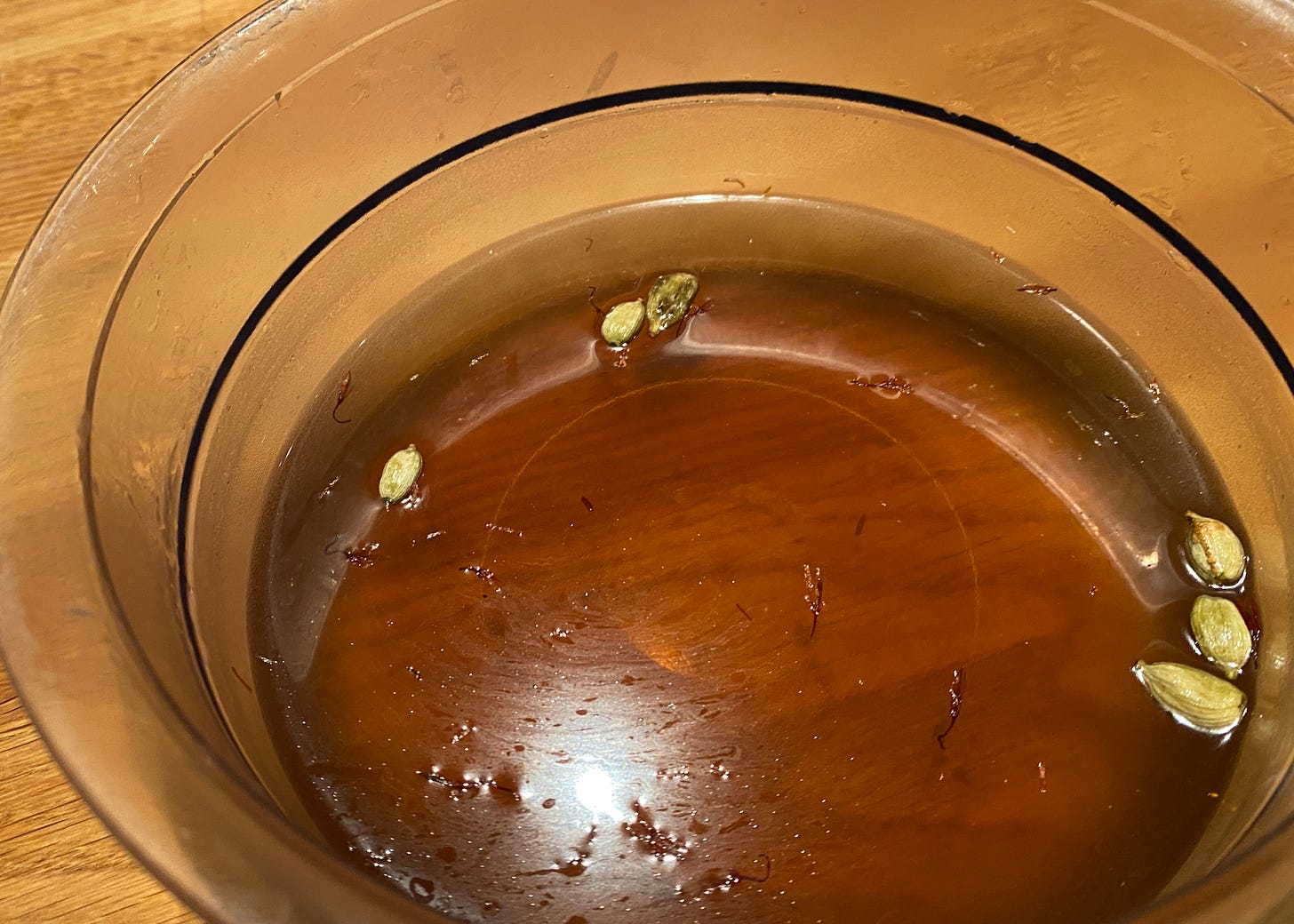
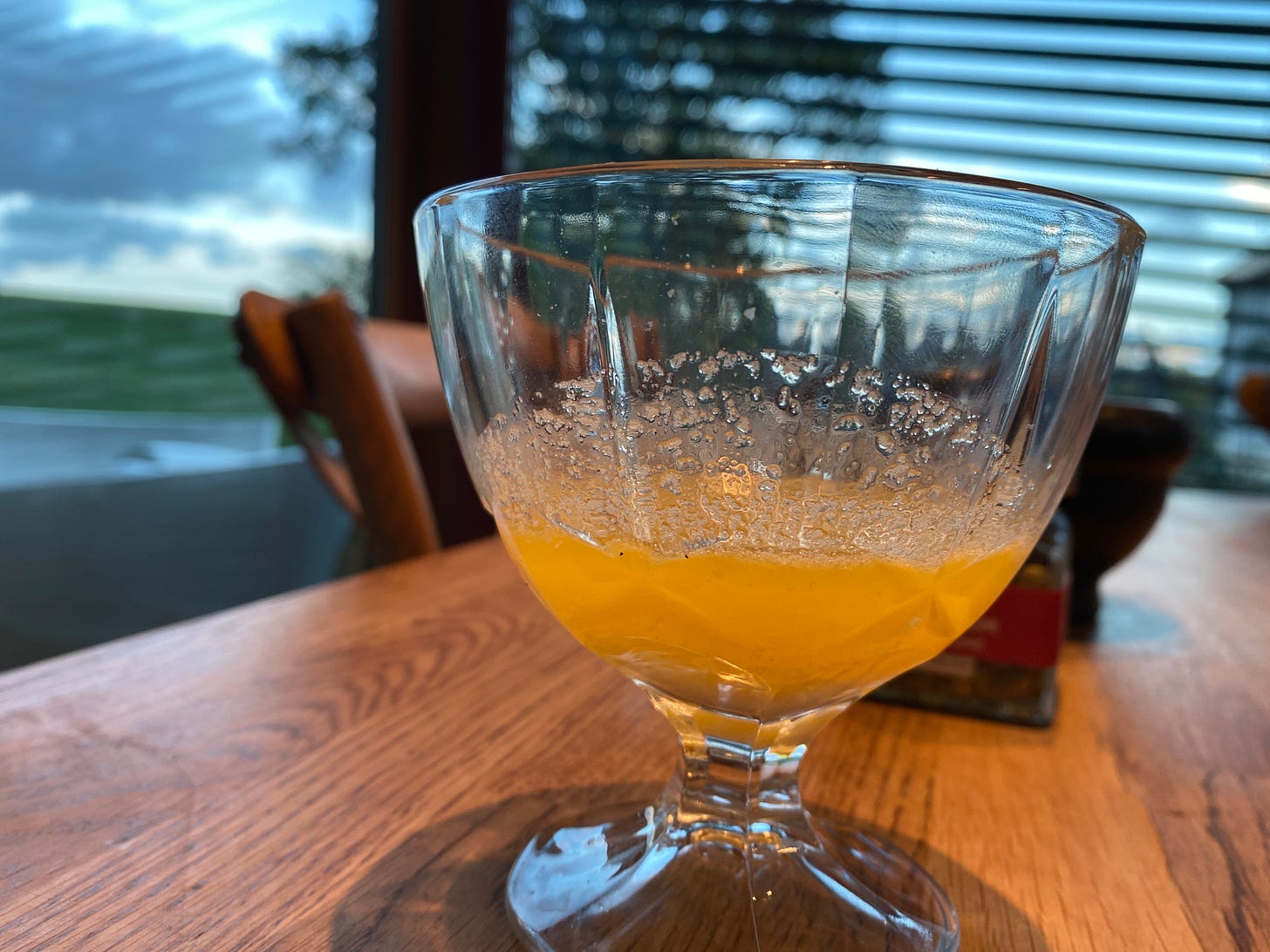

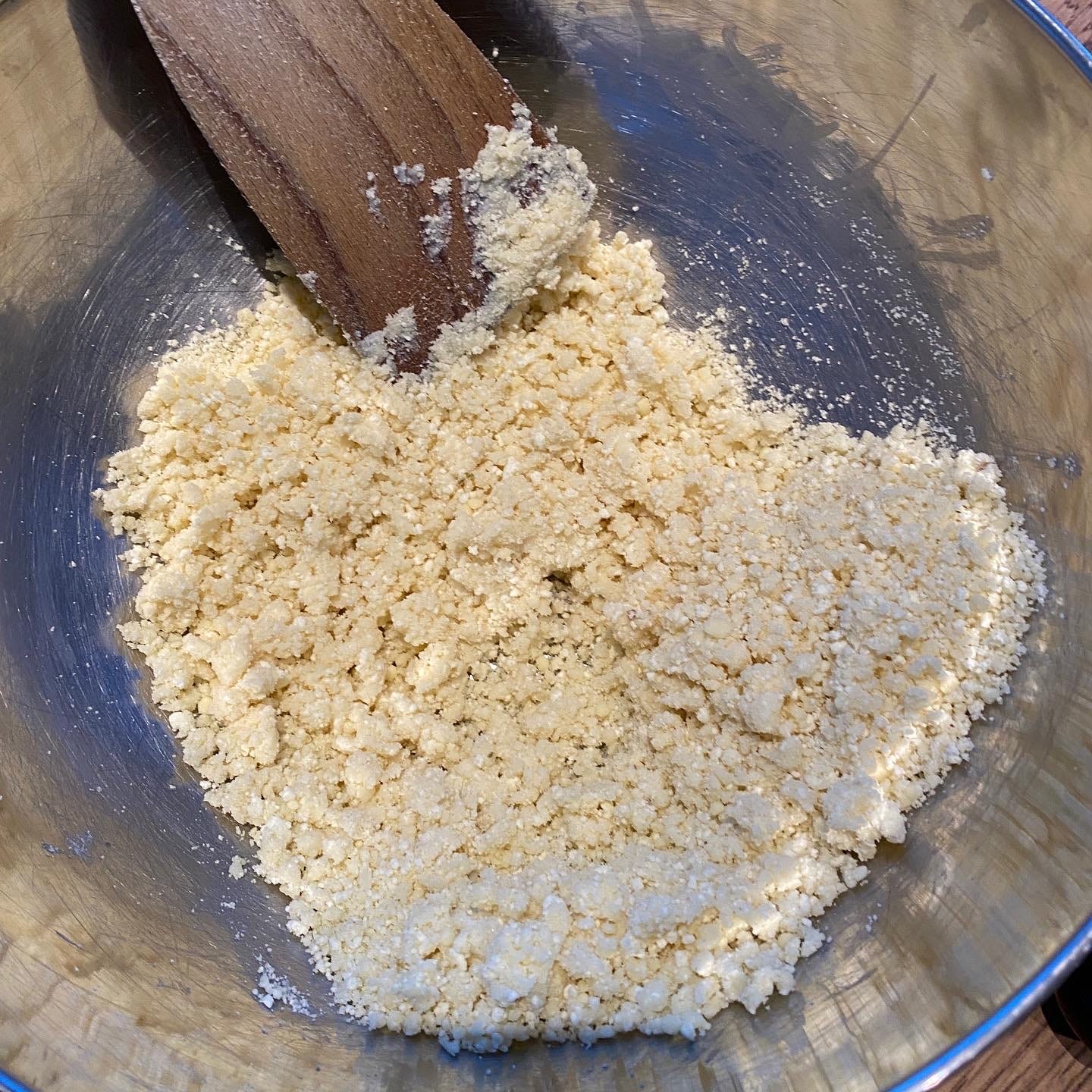
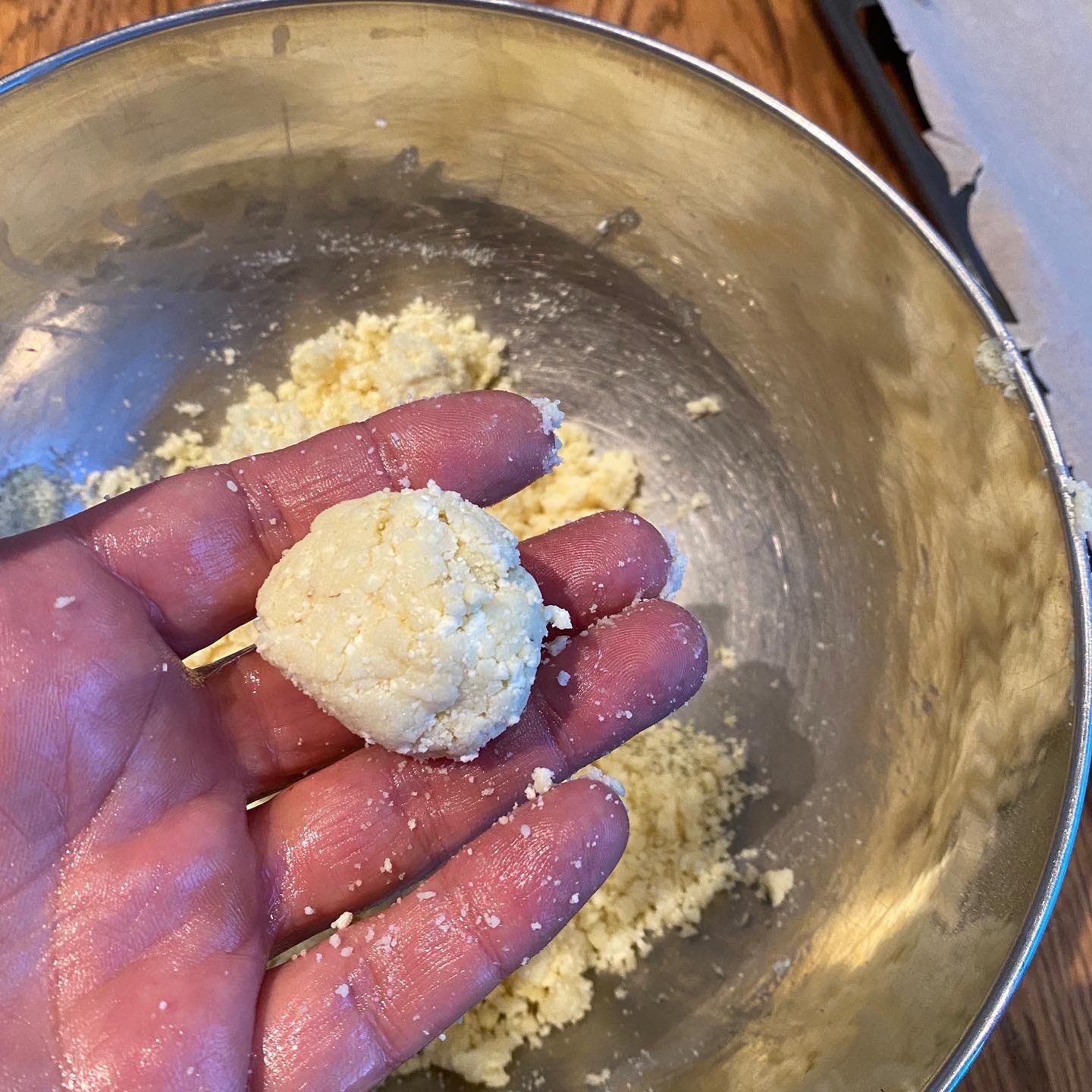
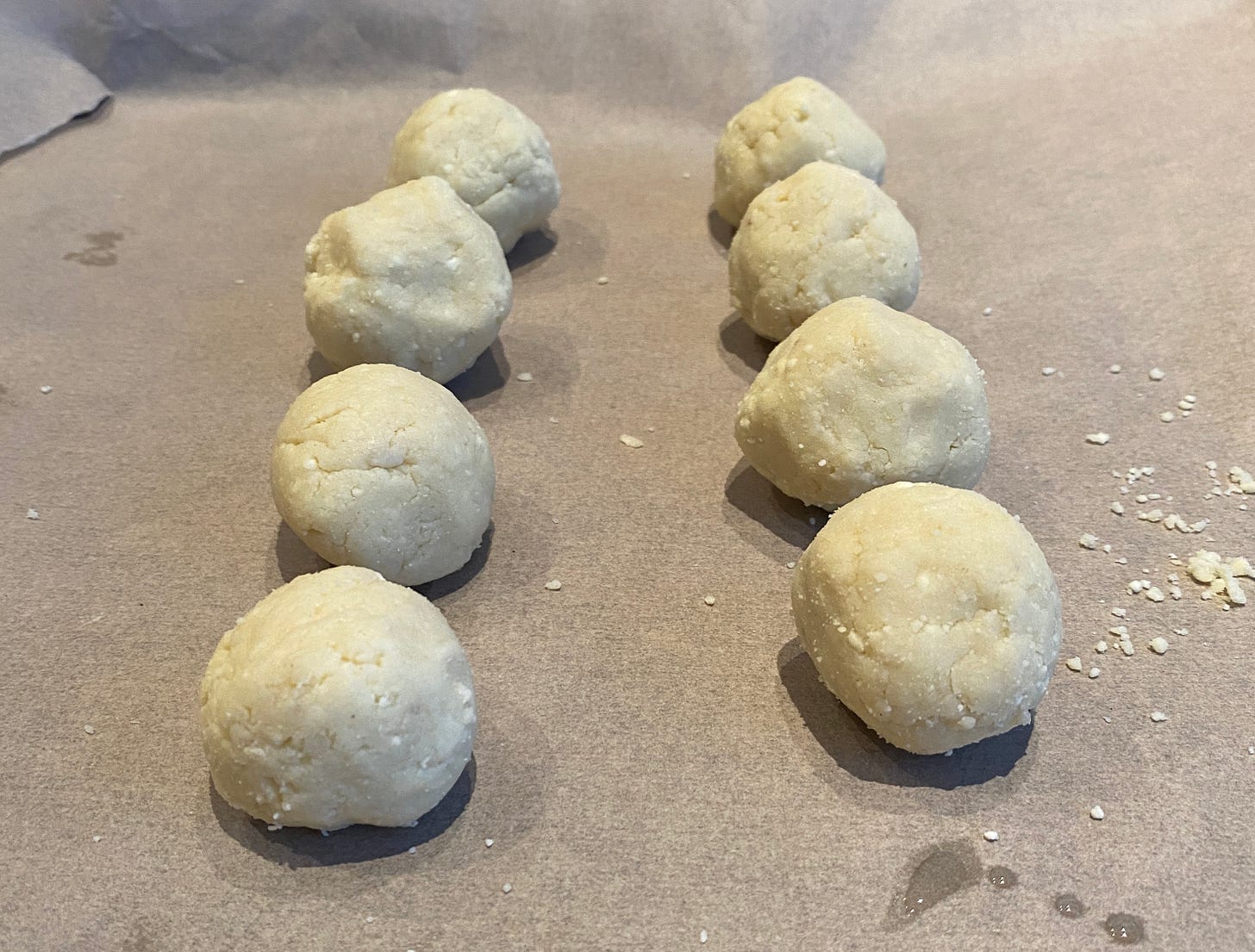
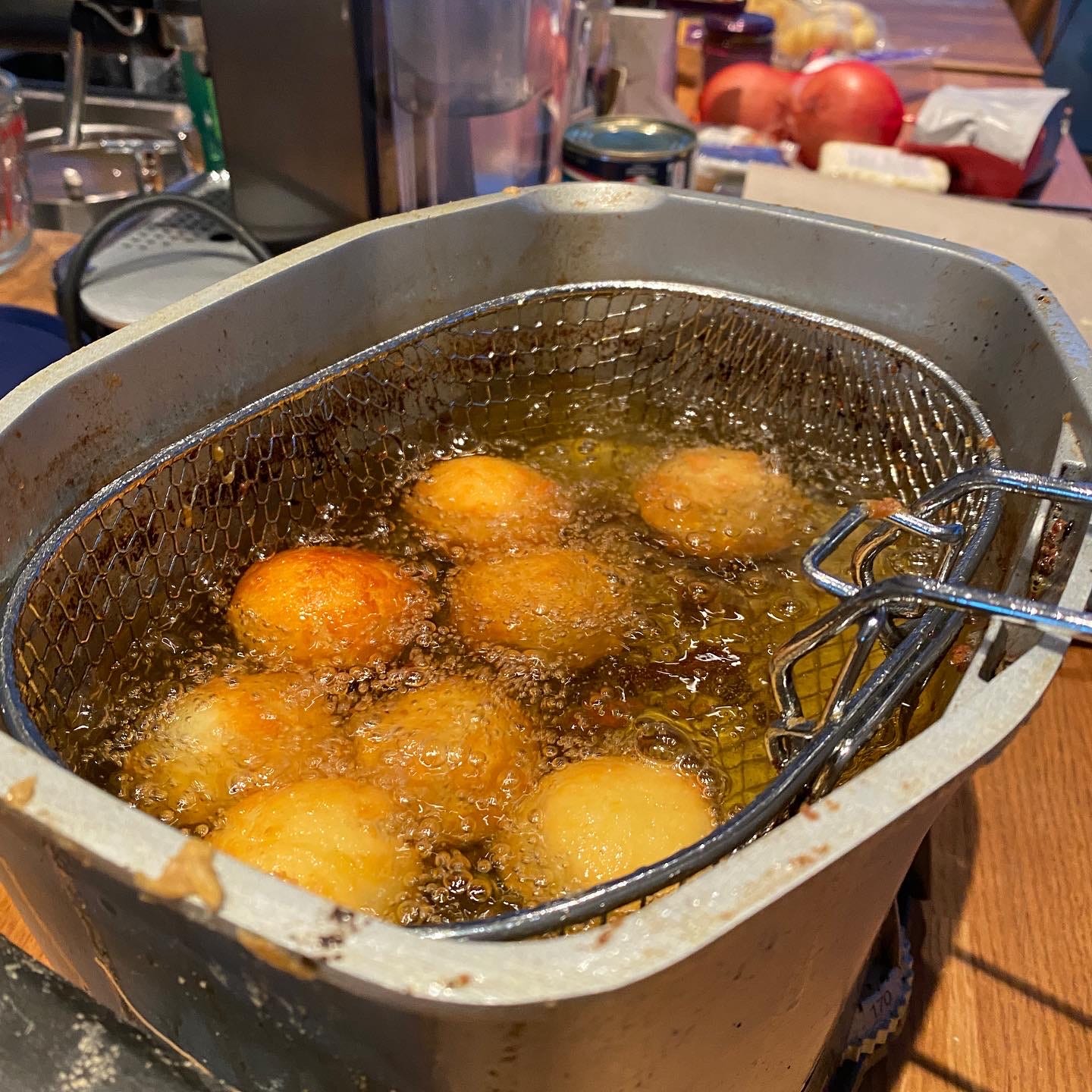
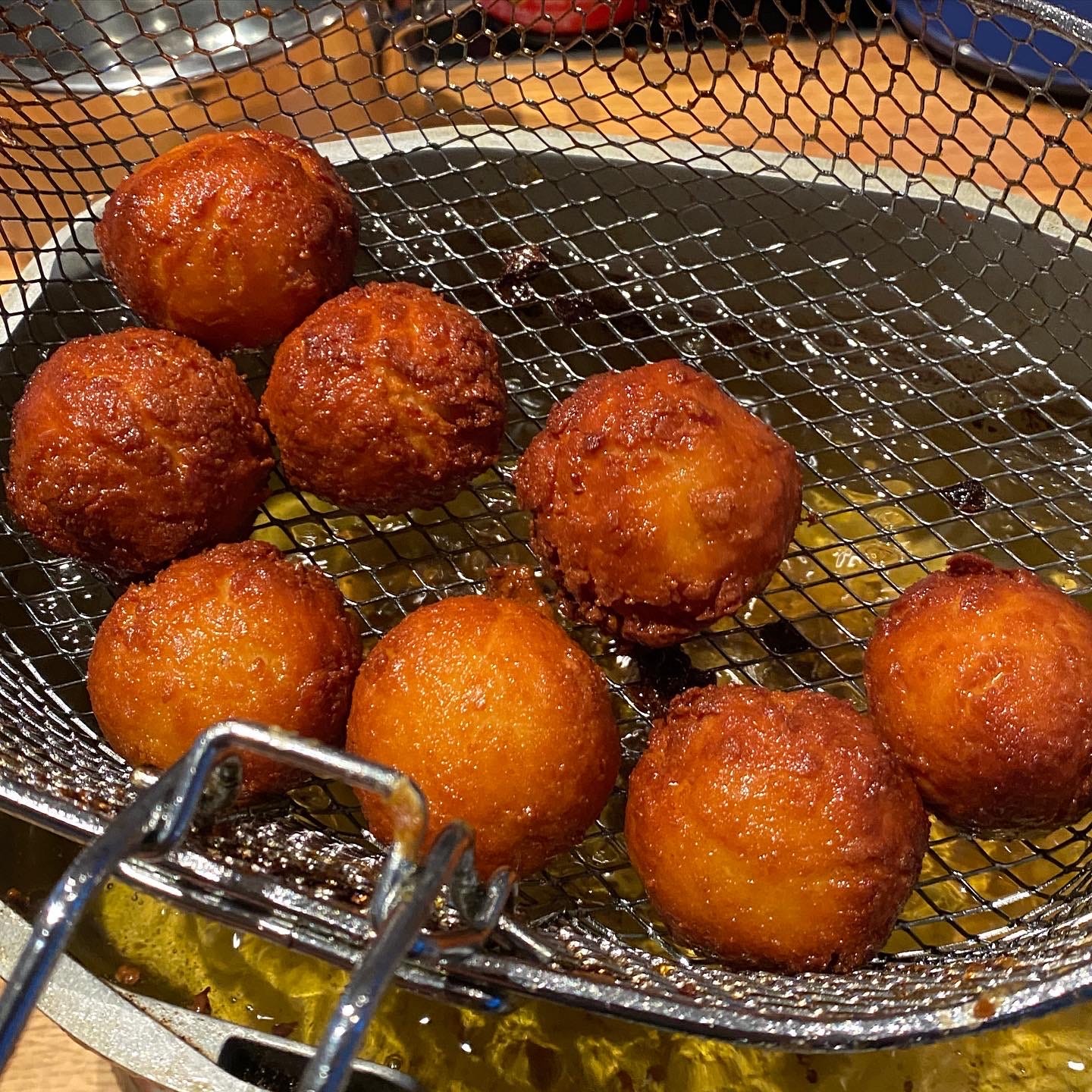
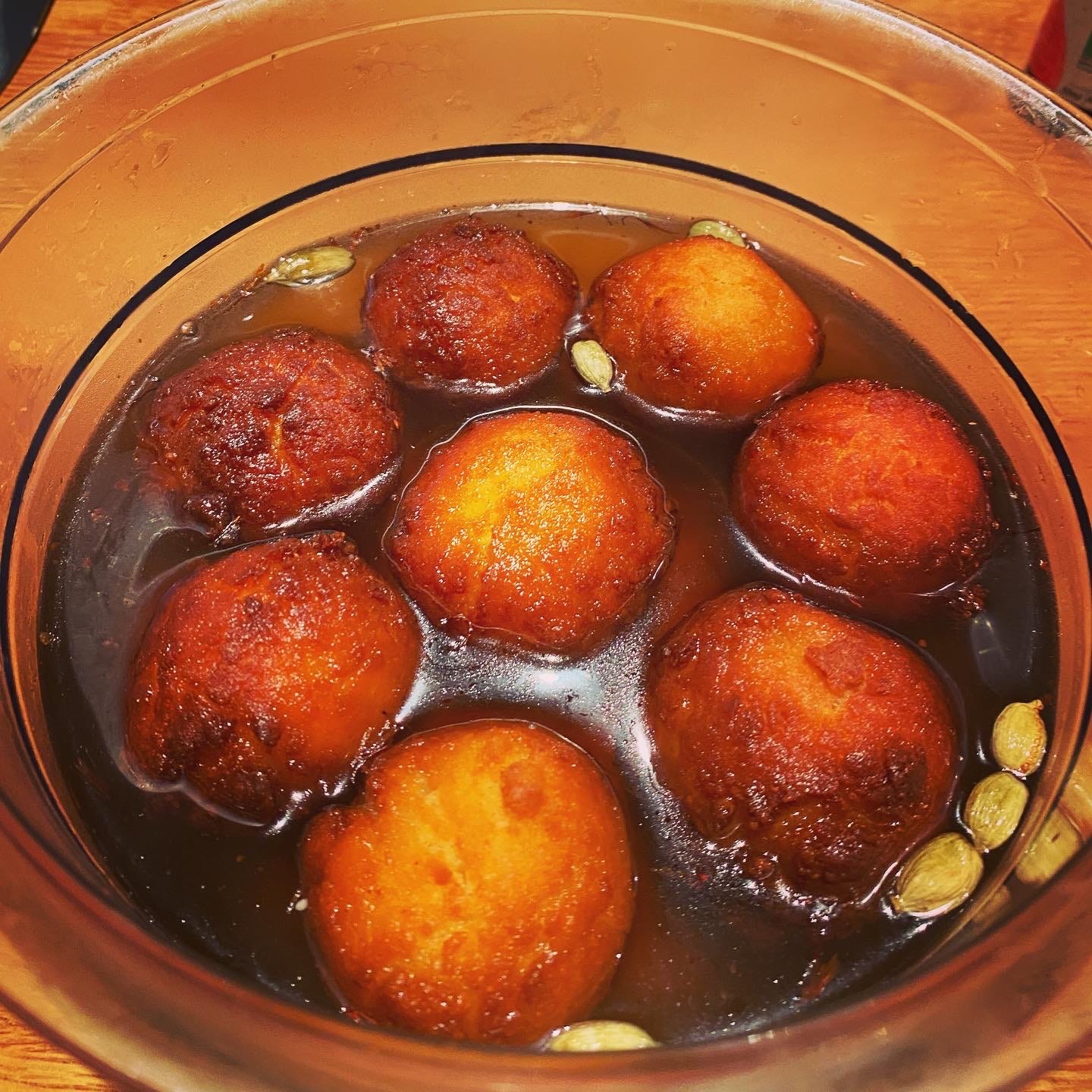
Ha gtfu! I too worked in fine-dining kitchens for a decade! Now FOH full-time while concurrently studying human services full-time: LET'S PARTY.
You can weave Indian festivals and recipes into your writing. Well played! Also, looks delicious!